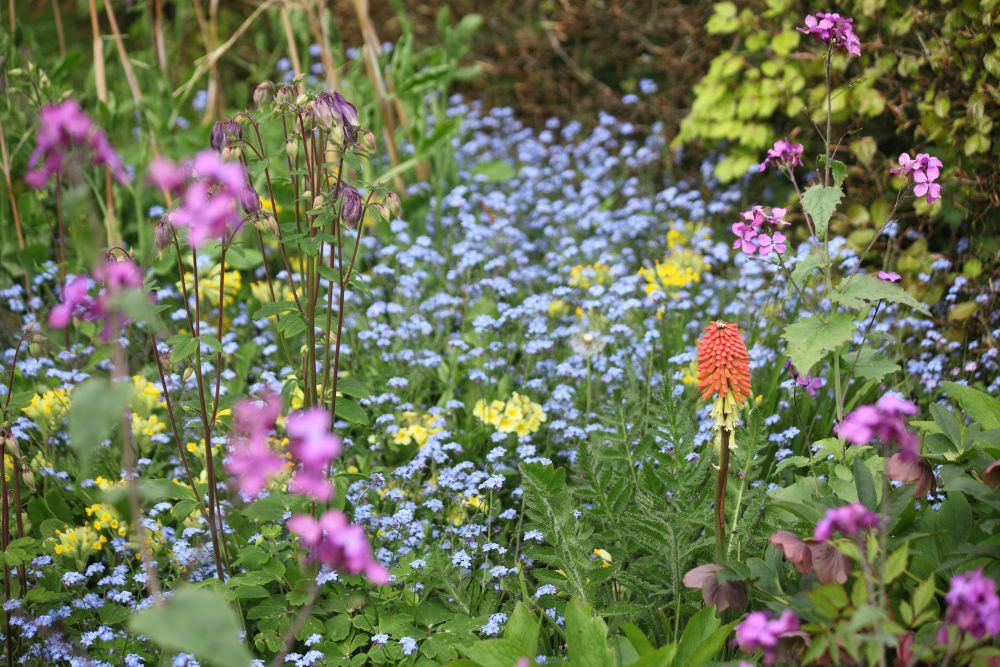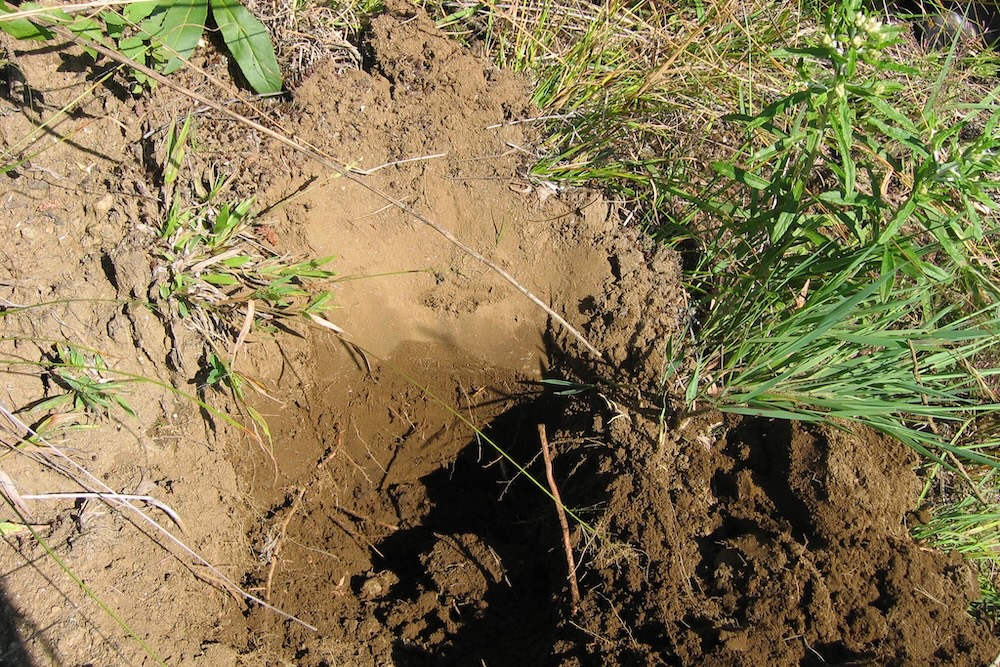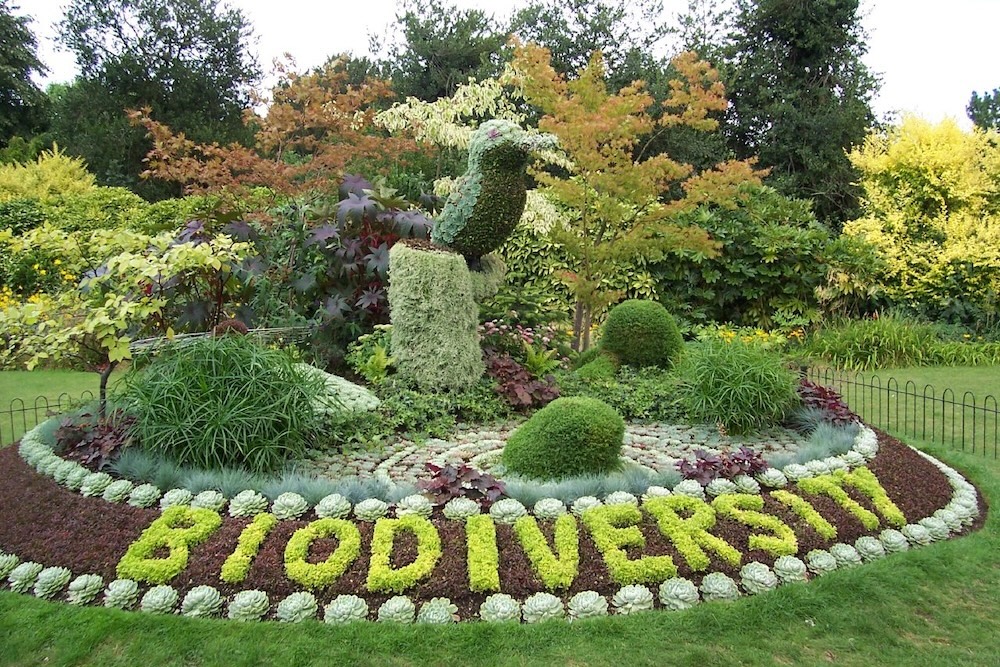In this article, we’ll help you understand everything you need to know to begin gardening successfully in sandy soil.
How to Maintain a Thriving Australian Cottage Garden
Immerse yourself in the enchanting world of cottage gardens, a timeless symbol of rustic charm and beauty. From Australia’s sunny coasts to its verdant hinterlands, these gardens capture the hearts of both seasoned home gardeners and professional landscape maintenance experts.
This guide explores the critical role of maintenance in preserving the allure of your existing garden and ensuring it continues to flourish.
- What is a Cottage Garden?
- Types of Plants Used in a Typical Cottage Garden
- Arranging Your Plants
- Keeping Your Plants Healthy
- Pruning to Preserve the Abundant Look
- Watering Your Cottage Garden
- Fertilising Your Cottage Garden
- Keeping Pests at Bay: Integrated Pest Management
- Seasonal Care: Ensuring Year-Round Garden Health
- Exploring the World of Companion Planting
- Soil Health in Your Cottage Garden
- Implementing Permaculture Principles in Your Maintenance Routine
- Propagation Techniques: Maintaining Garden Diversity
- Therapeutic Benefits of Maintaining Your Cottage Garden
- DIY Projects: Enhancing Your Existing Cottage Garden
- Daniel’s Wrap

What is a Cottage Garden?
A cottage garden is a charming and informal style of garden that originated in England. It’s known for its lush, romantic feel and seemingly haphazard yet meticulously planned planting schemes. This distinct style uses informal design, dense plantings, and a mixture of ornamental and edible plants.
Unlike formal gardens, which are typically characterised by symmetrical, geometric designs and uniform plantings, cottage gardens have a more relaxed and natural feel. The origins of cottage gardens are rooted in the kitchen gardens of rural workers, who needed to make the most of small spaces for practical purposes like growing vegetables and herbs.
This utilitarian history contributes to the eclectic mix of plants found in cottage gardens, which often include a combination of fruit trees, herbs, vegetables, and perennial flowers. Cottage gardens are also distinctive for their use of traditional materials and features, such as stone or brick pathways, rustic wooden fences, and arbours covered in climbing roses or vines.
These elements contribute to the garden’s overall charm and old-world feel.
Another key characteristic of cottage gardens is their emphasis on maximising the use of space. Plants are usually arranged in a way that allows them to spill over onto pathways or weave through one another, creating a lush, abundant look.
This contrasts with other garden styles, such as Japanese or modern minimalist gardens, where space is often left open and plants are more sparsely placed. Cottage gardens aren’t overly fussy, or obsessively neat and tidy. But despite their wild appearance, maintaining a cottage garden requires careful planning and regular care to ensure a pleasing arrangement and healthy plants.
Types of Plants Used in a Typical Cottage Garden
The beauty of a cottage garden lies in its eclectic mix of plants, offering a feast for the senses throughout the year. While the specific plant selection may vary based on local climate and the gardener’s preference, there are a few staples commonly found in these gardens.
Roses, particularly climbing and old-fashioned varieties, are a classic choice for their stunning blooms and sweet fragrance. Lavenders, with their vibrant purple flowers and soothing scent, are another popular choice, often used to line paths or as a low hedge.
Herbaceous perennials like Delphiniums, Hollyhocks, and Foxgloves add height and drama to the garden, with their tall spikes of colourful flowers. Ground cover plants such as Geraniums and Native Violets fill in gaps and help suppress weeds.
Native Australian alternatives to these European plants include Westringias, Callistemons, Chrysocephalums, Dianellas, Lomandras and Poas. A cottage garden is a celebration of colours, shapes and textures where it’s okay that the plants are growing into one another.
Cottage gardens also often include edible plants, harking back to their utilitarian roots. Herbs such as Rosemary, Thyme, and Mint are common, along with fruit trees and vegetable plots. Finally, climbers like Clematis, Wisteria, and Honeysuckle are used to adorn walls, fences, and arbours, adding vertical interest and enhancing the garden’s romantic feel.
When selecting plants for a cottage garden, it’s important to consider factors like soil type, sunlight, and water requirements to ensure each plant can thrive. Ozbreed Green Life offers a wide range of suitable exotic and native plants for cottage gardens, each carefully selected for their beauty, hardiness, and suitability to Australian conditions.
Arranging Your Plants
Arranging your plants thoughtfully is key to achieving the characteristic ‘tumbled’ aesthetic of a cottage garden. Consider factors such as plant height, colour, bloom time, and growth habit when deciding where to place or replace each plant.
Typically, taller plants like delphiniums, foxgloves, and hollyhocks are placed at the back of borders, while medium-sized plants such as roses and peonies are positioned in the middle. Lower-growing plants like hardy geraniums and lady’s mantle are placed at the front. This creates a ‘layered’ effect, with each plant visible and contributing to the overall picture.
However, in keeping with the informal style of a cottage garden, don’t be afraid to break these rules occasionally. Allowing some taller plants to ‘self-seed’ in the front of borders, or letting some lower growers creep into the middle or back, can add to the relaxed, spontaneous feel.

Keeping Your Plants Healthy
Maintaining healthy plants forms the backbone of any successful garden, not just a cottage style. Each plant has their own specific care requirements, so don’t treat all plants the same way.
For example, Ferns, known for their lush green fronds, thrive in shady, moist conditions. They prefer a cool, damp spot with rich, and slightly acidic to neutral soil. Ferns love a good amount of organic matter, so mixing in compost or leaf mold can greatly benefit them.
On the other hand, Lavenders, with their fragrant purple flowers, prefer the opposite. They require full sun and well-drained soil. Lavenders thrive in sandy or gravelly soils and can tolerate drought conditions. They prefer a neutral to slightly alkaline pH and can handle leaner soils without much organic matter.
That’s not to say that you can’t enjoy both plant types in the same garden. You’ll just place them in different spots with a micro climate suited to each individual plant.
Pruning to Preserve the Abundant Look
Pruning in a cottage garden firstly involves removing dead, diseased, or overgrown branches from trees and shrubs, which not only helps to prevent the spread of disease, but also improves air circulation and light penetration. This, in turn, can lead to more vigorous growth and an increase in flowers and fruits.
Regular pruning also allows you to shape your plants and control their size, helping to maintain the desired look and feel of your garden. For example, you may choose to prune certain plants into a particular form to create a focal point, or to encourage others to grow in a more sprawling, naturalistic way to enhance the garden’s abundant look.
Watering Your Cottage Garden
Water is the lifeblood of any garden. It’s essential for delivering nutrients to plant roots, maintaining plant health, and encouraging vibrant blooms. Sure, you can hand water regularly, and that’s a great excuse to get out into the garden where you can keep an eye on things.
Or you can choose plants that will survive on rainwater alone. There’s nothing wrong with that at all. But the way to simplify this task is by setting up a reticulated irrigation system. This system delivers water directly to where it’s needed most – the root zones of your plants.
The result? Less water wastage and healthier, more resilient plants. There are numerous options available on the market, from simple drip systems to more sophisticated solutions with smart technology integration. Modern irrigation systems often come equipped with smart technology that allows you to manage your watering schedule remotely using an app on your phone.
This feature can be a real game-changer, particularly for those juggling busy schedules. With weather forecasts at your fingertips, you can adjust your watering schedule based on predicted rainfall or drought conditions. This not only saves water but also ensures your plants receive the right amount of moisture at the right time.
For example, during a heatwave, you can increase watering frequency to help your plants cope with the stress, while in wet weather, you can reduce it to prevent overwatering.
Fertilising Your Cottage Garden
Another key aspect of garden maintenance is regular fertilising. Different plants have different nutrient requirements, and understanding these can make a significant difference to the health and vibrancy of your garden.
Organic fertilisers, such as compost or well-rotted manure, are excellent options for enriching soil fertility. They release nutrients slowly, improving soil structure and promoting healthier root development.
Keeping Pests at Bay: Integrated Pest Management
Lastly, no garden maintenance routine would be complete without a plan for pest control. Pests can quickly overrun a garden if left unchecked, leading to significant plant damage. An integrated pest management approach, which combines preventative measures with targeted treatments, can help keep your garden pest-free.
By cultivating the right growing environment and choosing the right plant for the right place, you’re well on your way to preventing pests. Healthy plants are better equipped to repel the things that eat them, especially insect pests. Planting lots of plants with small flowers can attract an army of beneficial predatory insects to protect your plants, further reducing the need for chemical controls.
Erecting nets can be a good physical barrier to prevent some pests getting onto your plants, though they’re of little use once an outbreak has occurred. If you do see a major pest outbreak, try to use a physical control like plucking grubs off with your fingers, spraying them with a jet of water from the hose. A home-made white oil solution made from vegetable oil, detergent and soap is a natural way to kill pests as a last resort before turning to chemicals.
At this point, if a plant is still suffering, it might be time to get rid of it and replace it with something better. If you’re emotionally attached to the plant, this can be a hard decision to make, at which point you might turn to a chemical pesticide as a last resort.
Seasonal Care: Ensuring Year-Round Garden Health
Caring for your garden is a year-round commitment. Each season brings its own tasks and considerations, from spring planting to winter pruning. A comprehensive guide to seasonal care can help you navigate these shifting demands, ensuring your garden stays vibrant throughout the year.
Make calendar with the care needed for each of your plants throughout the year. This will help you to care for your own garden, and it’s an invaluable resource to share with any landscape maintenance contractors you’ve employed to take care of the garden.

Exploring the World of Companion Planting
Companion planting is a gardening practice where certain plants are grown together for mutual benefit. This can help maintain a healthy balance in your garden by promoting beneficial insect activity and improving soil health. There are all types of guides on the internet that will tell you what to plant with what.
But the truth is, plants have all types of relationships with each other and they don’t always conform to our beliefs or categories. By planting diverse plant families, genuses and species that all thrive in the same area, you’re increasing the biodiversity of plant life which will, in turn, increase the diversity of insect life, which will in turn introduce birds, lizards, amphibians and all manor of life forms.
Aside from bringing you joy, a biodiverse garden is better equipped to thrive and deal with plant health problems, because life breeds life.
Soil Health in Your Cottage Garden
The health and vitality of your garden are undeniably linked to the condition of your soil. It’s the foundation upon which your garden thrives, providing essential nutrients, water, and oxygen to your plants. Simply put, without healthy soil, your cottage garden will struggle to flourish. Carbon, which is the engine fuel of life on earth, turns your soil black.
If your soil is dark and crumbly, that’s a good indicator that things are on the right track. But it’s not a foolproof way of analysing soil fertility. The best horticulturists are doing regular testing. Testing allows you to assess nutrient levels, pH balance, and other quality indicators that directly impact your plant’s growth and development. It might seem pedantic, but until you’re doing this, you’re flying blind.
Plants require a range of nutrients for optimal growth, including macro-nutrients like nitrogen, phosphorus, and potassium, and micro-nutrients such as iron, zinc, and manganese. Soil testing through a lab can help ensure these nutrients are present in the right amounts. If any deficiencies are detected, they can be corrected with the appropriate fertilisers or soil additives.
The pH level of your soil can also significantly affect plant growth. Most plants prefer a slightly acidic to neutral pH level (6.0 to 7.0). However, some plants thrive in more acidic or alkaline soils. pH testing is much easier to do with a simple kit, such as the Manutech kit developed by the CSIRO. It can help you regularly monitor your soil’s pH level so you can make necessary adjustments to create an ideal environment for your plants.
One of the most effective ways to improve soil health is by incorporating organic matter. This can include compost, well-rotted manure, or leaf mould. Organic matter improves soil structure by adding carbon, increases nutrient content, and enhances the capacity to retain water. It can also help with drainage for heavier soil types.
That sounds counterintuitive, but think of carbon like a sponge that holds the right amount of water without staying soggy.
Implementing Permaculture Principles in Your Maintenance Routine
Permaculture is a creative design process that’s based on ethics and design principles. It guides us to mimic the patterns and relationships we can find in nature and can be applied to all aspects of human habitation, from agriculture to ecological building, from appropriate technology to education and even economics.
By adopting the principles of permaculture, you can create a cottage garden that not only enhances the beauty of your surroundings but also contributes to a sustainable future. The first principle of permaculture is to observe and interact with nature. This involves understanding the natural processes and cycles within your garden and working with them rather than against them.
For a cottage garden, this might mean studying the patterns of sunlight and shade throughout the day and across the seasons, noting how water flows through the landscape, and observing which plants do well in different parts of the garden. These observations can guide your planting decisions and help you create a garden that thrives with minimal intervention.
Another key principle of permaculture is catching and storing energy. In a garden context, this could involve using plants to capture sunlight and convert it into biomass through photosynthesis. It could also mean harvesting rainwater for later use, or creating windbreaks to reduce the impact of strong winds.
In a cottage garden, you might achieve this by installing a rainwater tank to collect roof runoff, planting trees and shrubs to provide shelter and shade, or incorporating a compost heap to recycle organic waste into nutrient-rich compost. Obtaining a yield is another important principle of permaculture. This refers to designing systems that produce useful outputs.
In a cottage garden, this could be as simple as growing vegetables, herbs, and fruits for your consumption, or cultivating flowers for their aesthetic appeal. The principles of applying self-regulation and accepting feedback involve monitoring the garden’s performance and making adjustments as necessary.
This could mean changing your watering schedule based on the weather, adding more compost to improve soil fertility, or introducing beneficial insects to control pests. By implementing these principles, along with the other principles of permaculture, you can create a cottage garden that’s not only beautiful but also productive and sustainable.
It will be a garden that works with nature, rather than against it, and one that contributes positively to the wider ecosystem.
Propagation Techniques: Maintaining Garden Diversity
Propagation – the process of growing new plants from a variety of sources such as seeds, cuttings, or other plant parts – is a cost-effective way to maintain diversity in your garden. Many of the typical cottage style perennial plants can be propagated by cutting, giving you a cost-effective way to fill out your garden if you’re on a budget. This activity also allows you to share plants with friends or swap them at local plant exchanges.

Therapeutic Benefits of Maintaining Your Cottage Garden
Beyond the tangible benefits to your garden, the act of gardening itself can offer numerous therapeutic benefits. Activities like planting, pruning, and weeding can provide stress relief, improve mental health, and offer a form of gentle physical exercise.
A good cottage garden is a pleasure to spend time in. You’ll find that any excuse will do to get outside, just so that you can be amongst the sights and sounds of nature.
DIY Projects: Enhancing Your Existing Cottage Garden
Adding personal touches to your garden can make it feel even more special. Why not try your hand at some DIY projects? From crafting homemade trellises that provide support for climbing plants, creating garden art that brings an added burst of colour, or building a bird bath that invites wildlife into your garden, there are countless ways to enhance your space.
These projects not only personalise your garden but also make for a rewarding and creative pastime.
Daniel’s Wrap
Maintaining the charm and vibrancy of your existing cottage garden in Australia is a fulfilling journey.
By paying attention to the essentials of garden maintenance, exploring innovative methods like moon gardening, implementing sustainable practices, and planting the right plant in the right place, you can ensure your garden continues to thrive.
We encourage you, whether you’re a home gardener or a professional landscape maintenance operator, to apply these maintenance tips and enjoy the rewards of a flourishing cottage garden.




This Post Has 0 Comments